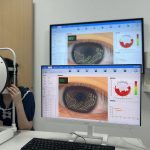With the rapid development of China’s economy, there have been significant changes in people’s diet and lifestyles, leading to an increasing incidence of metabolic disorders, with diabetes as the top disease nationwide. Active prevention and standardized management are effective strategies to address this issue, resulting in the establishment of the Standardized Metabolic Disease Management Center (MMC). MMC has achieved significant results since its inception, and so far, 1500 hospitals across 31 provinces, municipalities and autonomous regions in China have joined MMC, managing nearly one million diabetes patients.

What is MMC?
MMC is a standardized management system for metabolic diseases established and promoted nationwide by the National Clinical Research Center for Metabolic Diseases and the Shanghai Institute of Endocrine and Metabolic Diseases. Based on the concept of “one center, one standard, one-stop service”, MMC has a standardized diagnosis and treatment system and a digital network system, aiming to provide patients with one-stop diagnosis and treatment services, achieve multiple benefits both online and offline, inside and outside the hospital, and create a new diabetes treatment model that benefits patients, doctors, hospitals, and society.
The initial intent of establishment
Metabolic diseases represented by diabetes often have concurrent complications, such as cardiovascular disease, kidney disease, neuropathy, and retinopathy. Single testing items often cannot meet the clinical diagnosis and treatment requirements, so multiple complication indicators need to be tested. This leads to patients needing to queue repeatedly and run to different departments when seeking medical attention, resulting in increased burdens on both doctors and patients in terms of time and energy.
Metabolic diseases require patient self-management and long-term follow-up, but there are information silos between hospitals, and between hospitals and families, making it difficult to achieve precise diagnosis and continuous management.

Patients with diabetic retinopathy generally have no self-awareness of eye symptoms in the early stages of the disease. As the condition progresses, there may be different manifestations, such as macular edema, ischemia, or exudation, which can cause varying degrees of vision loss, accompanied by visual distortion, enlargement or reduction, etc. Retinal edema can cause light scattering, giving patients a feeling of flashing lights in front of their eyes. Relying solely on routine fundus examination makes it easy to miss diagnoses.
In the face of the severe prevention and control situation of metabolic diseases, MMC has made diabetes treatment more convenient and efficient through a high degree of standardization, realizing one-stop screening and diagnosis and treatment of diabetes and its complications. In 2020, with strong support from the higher authorities, the Inner Mongolia Qiu County Hospital of Traditional Chinese Medicine established a grass-roots standardized metabolic disease management center (MMC). More patients can be included in standardized examinations and treatment plans here, receiving unified management and services.
Expert Opinion
Recently, the Inner Mongolia Qiu County Hospital of Traditional Chinese Medicine introduced the Big Vision artificial intelligence OCT. We were fortunate to interview Dr. Jiang Zhihui, head of the third internal medicine department of the hospital, and listened to the clinical application experience sharing from an endocrinology expert on the use of artificial intelligence in diabetic retinopathy screening and prevention.
Dr. Jiang shared: “Currently, the incidence of diabetes among people aged 18 and above is as high as 12%, and the domestic statistics have reached 120 million, among which many have diabetic retinopathy. This type of diabetic retinopathy is difficult to detect through conventional examination and requires precise screening of retinal lesions using OCT technology. Therefore, our hospital has introduced the Big Vision artificial intelligence OCT. Through AI technology, we can help diabetic patients detect diabetic retinopathy early, and intervene and treat it promptly.”

The “Clinical Diagnosis and Treatment Guidelines for Diabetic Retinopathy in China 2022” have included the focus on intervention for diabetic macular edema in addition to retinopathy. Macular edema can occur in both the non-proliferative and proliferative stages of diabetic retinopathy, and can be screened using non-invasive optical coherence tomography (OCT) imaging technology. The Big Vision AI OCT cross-sectional examination can quickly detect small changes in the retinal layers, utilizing the principle of weak coherent light interference to obtain three-dimensional structural images of the fundus, which can clearly display the vascular structure and microvascular changes of the retina and choroid, monitor the progression of diabetic retinopathy at different stages, and has a relatively high patient acceptance rate, helping to detect macular lesions.

Dr. Jiang Zhihui shared: “We are originally an endocrinology department, and many eye-related problems require OCT to be used for fundus screening. Therefore, we considered applying for the purchase of an OCT machine. During the trial period, we found that the Big Vision equipment is easy to operate, and the examination process with patients is very smooth. The AI can automatically identify and label lesions in various major fundus diseases, restore the true information of the lesions, and provide AI-assisted diagnostic suggestions with extremely high accuracy. The product performance can fully meet clinical needs and also solves the problem of relying on ophthalmology for everything.”

There exists a reality of insufficient and unequal allocation of medical resources in China, and traditional disease diagnosis and treatment methods are difficult to effectively control chronic diseases. As an important tool for clinical vascular disease examination in diabetic retinopathy, Big Vision OCT utilizes artificial intelligence to achieve cardiovascular chronic disease management and prevention, assisting the Endocrinology Department of Neiqiu County Hospital in Xingtai to facilitate medical treatment for diabetes patients.
In the future, Big Vision AI OCT will further improve the management level of complications in eye diseases, timely detect hidden early fundus lesions in diabetic retinopathy patients, effectively prevent the occurrence of complications, and improve the quality of life for diabetic retinopathy patients.

Health appeal:
Diabetes patients should adhere to
regular diabetic retinopathy screening,
attach importance to early prevention of diabetic retinopathy disease,
and timely detect early eye lesions to reduce the incidence and blindness rate of complications in diabetes patients












No comments yet.